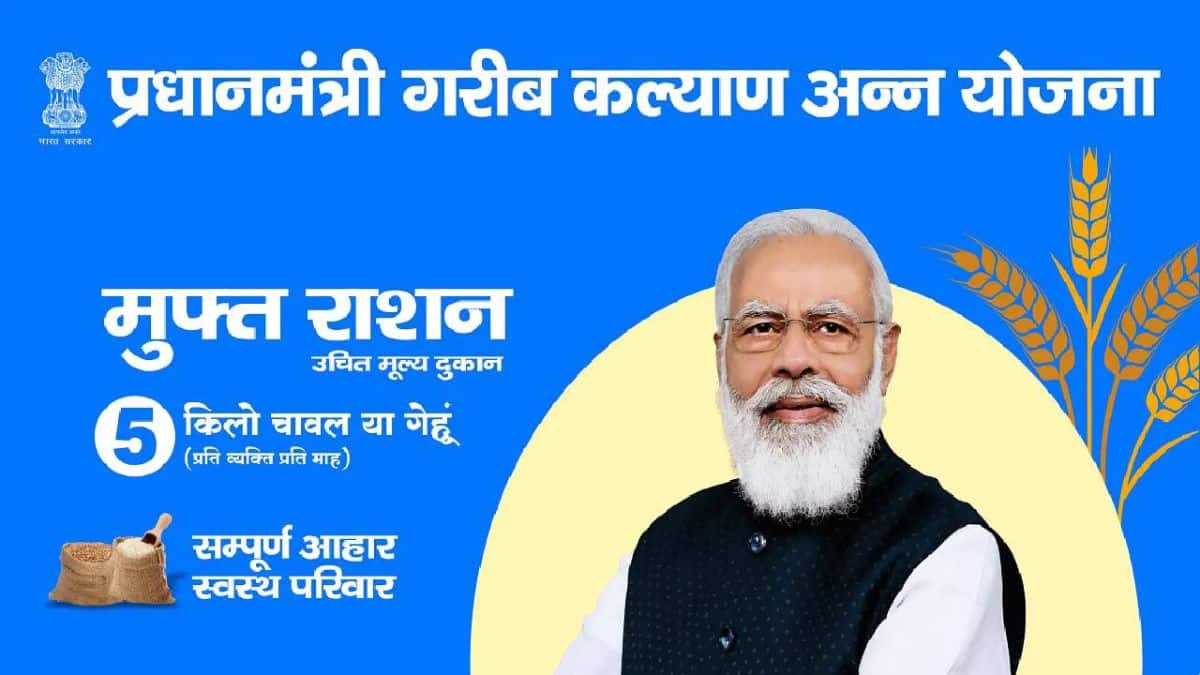HIGHLIGHTS
- Introduction about the Pradhan Mantri Garib Kalyan Anna Yojana (PMGKAY).
- This article explores the key features of Pradhan Mantri Garib Kalyan Anna Yojana (PMGKAY).
- Future Prospects and Recommendations for PMGKAY.

The Pradhan Mantri Garib Kalyan Anna Yojana (PMGKAY) is a free food security welfare program implemented by the Government of India to help the economically Nadine persons in his country in times of hardship. This scheme involves the distribution of free food grains for needy beneficiaries to avoid the struggles of food insecurity in them or millions of families. This article seeks to discuss the characteristics, importance, and considerations for the successful use of PMGKAY to elucidate its importance in the provision of assistance to needy citizens.
Table of Contents
Introduction
The Pradhan Mantri Garib Kalyan Anna Yojana is an Indian food security scheme from the government of India in March 2020 to provide food to the economically weaker section of the population during crises like pandemics. The beneficent device of the scheme is to offer food grains without any costs to appropriate recipients to avoid hunger and failure to well feed. It aims at the NFSA card holders consisting of individuals and families belonging to the lower economic bracket of society, the AAY, and PHH beneficiaries. Apart from their normal edible requirements, beneficiaries are provided with food grains at the rate of 5 kgs per month per person free of cost.
History Context
Background Information
Origin and Lauch date of PMGKAY
Pradhan Mantri Garib Kalyan Anna Yojana (PMGKAY) of the Government of India was initiated on the 26th of March 2020. It was launched as one of the tools in the fight against the economic impacts induced by the Coronavirus outbreak.
Socio-Economics conditions leading to its inception
- COVID-19 Pandemic: The pandemic exposed existing economic vulnerabilities and resulted in massive losses of employment, thus cutting down the family incomes in low-income classes. Lockdowns and other forms of restrictions badly affected the daily wage earners and migrants.
- Economic Slowdown: Most sectors were impacted by the pandemic which led to a slowdown of some activities such as agriculture manufacturing and services hence the worsening of the economic problems among vulnerable groups.
- Increased Food Insecurity: This pertains to the economy as with the latter coming under pressure, people had challenges feeding themselves and family.
Government Initiatives
PMGKAY was a strategy for the entire food security architecture of the government of India to ensure and provide a hand to the economy or the worst-hit portion of the population during this pandemic.
- Distribution of Free Food Grains: When carrying out the scheme, food grains were provided to the NFSA and other identified categories of beneficiaries without food prices. At first, it was proposed that it would have to take from the time of the lockdown period of the pandemic but later revised.
- Extended Coverage: This scheme was fast growing by incorporating many phases of a year and wide tentacle of beneficiaries that needed to be covered.
- Central and State Coordination: In this, they have entailed central and state cooperations/coalitions aimed at the distribution/transportation of food grains.
Previous schemes related to food security in India
- Public Distribution System (PDS): Another oldest food security scheme also in India has been started to spread the needful of the essential food items, out of which food grains form one important part, within easy, affordable reach of the common man It has undergone many a change and added improvement in different fields of its rendering to the public over the years.
- National Food Security Act (NFSA), 2013: This act emphasizes the continuation of supplying food grains at reasonable prices to a larger population including the weaker section of society and another category of people.
- Antyodaya Anna Yojana (AAY): This scheme was started to operate from the financial year 2000-2001 with the specific intention to target mainly the neediest, section known as Bottom of the Pyramid, and sell food grains at a very low price.
- Mid-Day Meal Scheme: This scheme endeavored to increase children’s nutritional status through offering free meals to them, these children attend government and government-aided schools.
Key Features of PMGKAY
Free Food Grain Distribution
Quantity and Type of Food Grains Provided:
They need to indicate the quantities and the types of food grains provided by them to the targeted households with potential standards or norms set by them.
- Food Grains Provided: It is implemented overlying the provision of free food grains Basically, rice and wheat to the entitled populations.
- Quantity: Entries indicate that a beneficiary is supposed to receive 5 kilograms of food grains for each month. This includes the NFSA quota to each state excluding the extra quantity apart from the NFSA allocation.
Duration and Frequency of Distribution:
Frequency of distribution also means the extension of the frequency plan of various groups and clusters of tons throughout the year, to define the duration of the frequency of each one of them.
Initial Launch: Previously, it was passed to survive the period of the COVID-19 lockdowns only.
- Extensions: Due to the unpleasant consequences of the pandemic unsettling, the scheme has been rolled over severally. The extensions have included, different phases and the last one was extended up to December 2023 there may be further extensions possible concerning the governmental decisions due to the present situation.
- Frequency: This is made monthly in a way that the beneficiaries should be in a position to access their portions of food grains monthly without failures.
Coverage and Reach
Number of Beneficiaries Covered Under the Scheme:
The targeted beneficiaries of the PMGKAY are about 50 crore (500 million) to 80 crore (800 million) persons all over India. This ranges from persons under the NFSA – which in itself is a form of identification constituting a large part of the population.
Geographic Reach Across States and Union Territories:
- Nationwide Coverage: It is laid down on all the states as well as the Union Territories in India. Thus, each state and UT has the responsibility of providing food security through the distribution of food grains in the right quantities to every beneficiary through the fair-price shops and other outlets owned by the PDS.
- Adaptability: The scheme is flexible, in this way the states can choose various methods of distribution because of the conditions of the area or the distance the food has to travel.
Implementation Strategy
Distribution Mechanism:
- Role of Public Distribution System (PDS): FSC is the principal means of distributing food grains. Its implementation also suggests the local ration shops as being the suppliers of the free food grains to the targeted groups of beneficiaries.
- Involvement of State Governments and Local Authorities: Nevertheless, it is the state governments that get engaged in the delivery operation to ensure that the end-beneficiaries get the food. At the operational level, this is within the jurisdiction of the local government and the delivered institutions.
Monitoring and Evaluation:
- Transparency and Accountability Measures: There are mechanisms used to set accountability on the drugs that are to be distributed and to discourage fraud and some of these are record keeping in computers and audits among others.
- Feedback Mechanisms: The consumer can feedback through plants, through phone numbers, and through zonal offices, where they are attended to and the problem solved.
Impact Assessment
Economic Impact:
Contribution to Poverty Alleviation:
PMGKAY was very helpful in alleviating the COVID-19 pandemic economic burden by supplementing food items at no cost. Bad outcomes due to negative shocks impacted vulnerable, vulnerable households obtained short-term help, to release short-term pressure and keep minimum nutrition levels for helping to reduce poverty.
Social Impact:
Nutritional Improvement:
Despite this, PMGKAY was established to offer free rice and wheat to the low-income population to enhance their nutritional status. It was crucial to guarantee the purchases of the necessary food products so that in this way families could at least maintain the minimum nutritional level during the worst phase of the economic meltdown.
Challenges Faced
Issues Encountered:
Logistical Hurdles:
Many operational barriers were encountered while undertaking PMGKAY implementation and affected its functionality. Key issues included:
- Transportation Issues: Transportation and distribution of food grains from central granaries to operational distribution centers and hence to the inferior level markets and fair price shops was a problem in some of the states, particularly in the remote areas and interior regions.
- Distribution Delays: In some regions, the arrival of food grains on time was severely hindered by bureaucratic issues, poor management, and the general lack of coordination between central, state, and local governments.
- Mismanagement: There were reports of misappropriation of those supplies, and poor documentation in some regions, thus straining the efficient delivery of aid to the beneficiaries.
Case Studies/Success Stories
Examples from Various States:
- Kerala: Kerala used to have an excellent distribution network and the food grains were also delivered in time to the beneficiaries. The excellent organization of the PDS system along with the state government measures ensured a vibrant display of Aeropostale across the state.
- Uttar Pradesh: In Uttar Pradesh, the state government faced some problems initially in the distribution but they sorted it out by better co-ordination with the local government. The smooth flow facilitated the provision of assistance to the highest possible amount of beneficiaries within the given time.
Beneficiary Testimonials:
- Maya, a daily wage worker from Mumbai: “PMGKAY saved my family from starvation There was no income left during the lockdown and this free food grain supply helped to feed my family during the worst time. ”
- Ravi, a farmer from rural Tamil Nadu: “The free rice and wheat in PMGKAY helped my family for food when our farming income decreased it helped a lot during the pandemic. ”
Future Prospects and Recommendations
Sustainability Measures:
Plans for Extending or Modifying the Scheme:
The upcoming transformations of the PMGKAY can be the changes depending on the changes in economic prerequisites or adding the suggestions of the recipients to the further improvements of the project. The scheme might, hence, adapt to other needs that are not necessarily tied to COVID-19 concerning food security.
Policy Recommendations:
Enhancing Efficiency and Effectiveness:
- Improving Logistics: Develop the transport as well as the distribution channels to increase the chances of on-time delivery.
- Leveraging Technology: I will suggest the use of computerized equipment to keep records of the stocks of foods.
- Increasing Transparency: It has to develop efficient supervisory precautions to prevent instances of embezzlement and guarantee the assistance reaches the target people.
Conclusion:
The largest free food security program ever initiated was equally instrumental in addressing the food security food crisis that came with the COVID-19 outbreak. These are the types of claims e.g. improved nutrition, relief of Economic difficulties, and a rise in poverty eradication. Therefore, their backing upholds the need for commendable aid delivery in any context to the exclusion of obstacles. There has also been a note made that future enhancement of the distribution and technology aid such efforts.
Additional Resources
Links to official government documents regarding PMGKAY.
Contact information for state-specific helplines:
- Kerala: 0471-2335398
- Uttar Pradesh: 0522-2235868
- Tamil Nadu: 044-25619223
Further readings on food security initiatives in India:
FAQs
What is the full form of the scheme Anna Yojana?
Thus Antyodaya Anna Yojana (AAY) is one of the largest programmes started by the Government of India. The public distribution system scheme is a scheme that was launched in India in the year 2000. But primarily, the food supply system aims to feed the population of the country and to eradicate hunger in India.
What is the main focus of Pradhan Mantri Garib Kalyan Anna Yojana?
Free cylinders have to be promised to the BPL families for three months, as the Finance Minister of India has stated. Under the PM Garib Kalyan Yojana (PMGKY) scheme the individual has to deposit 50% of the amount that is unreported by him.


